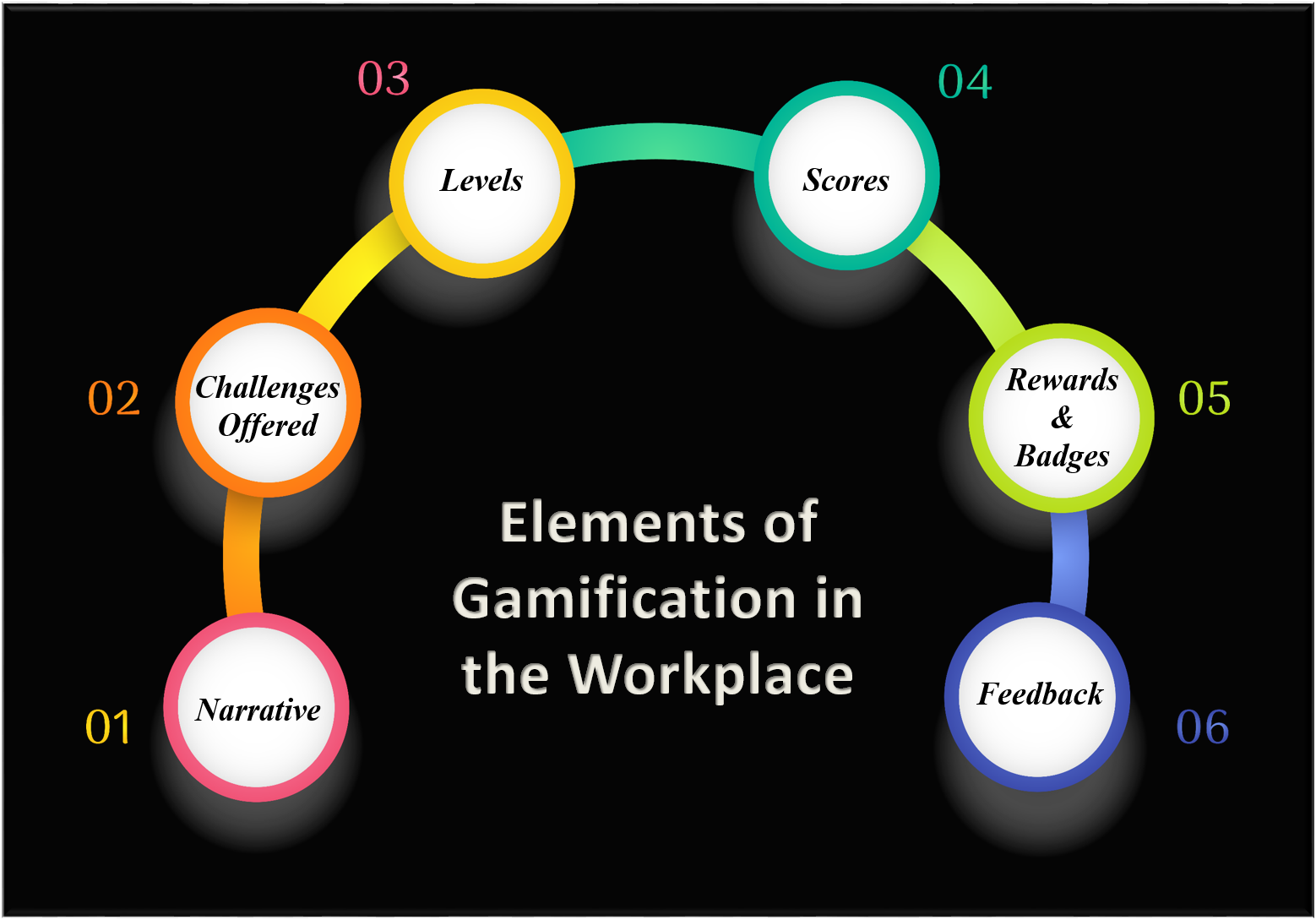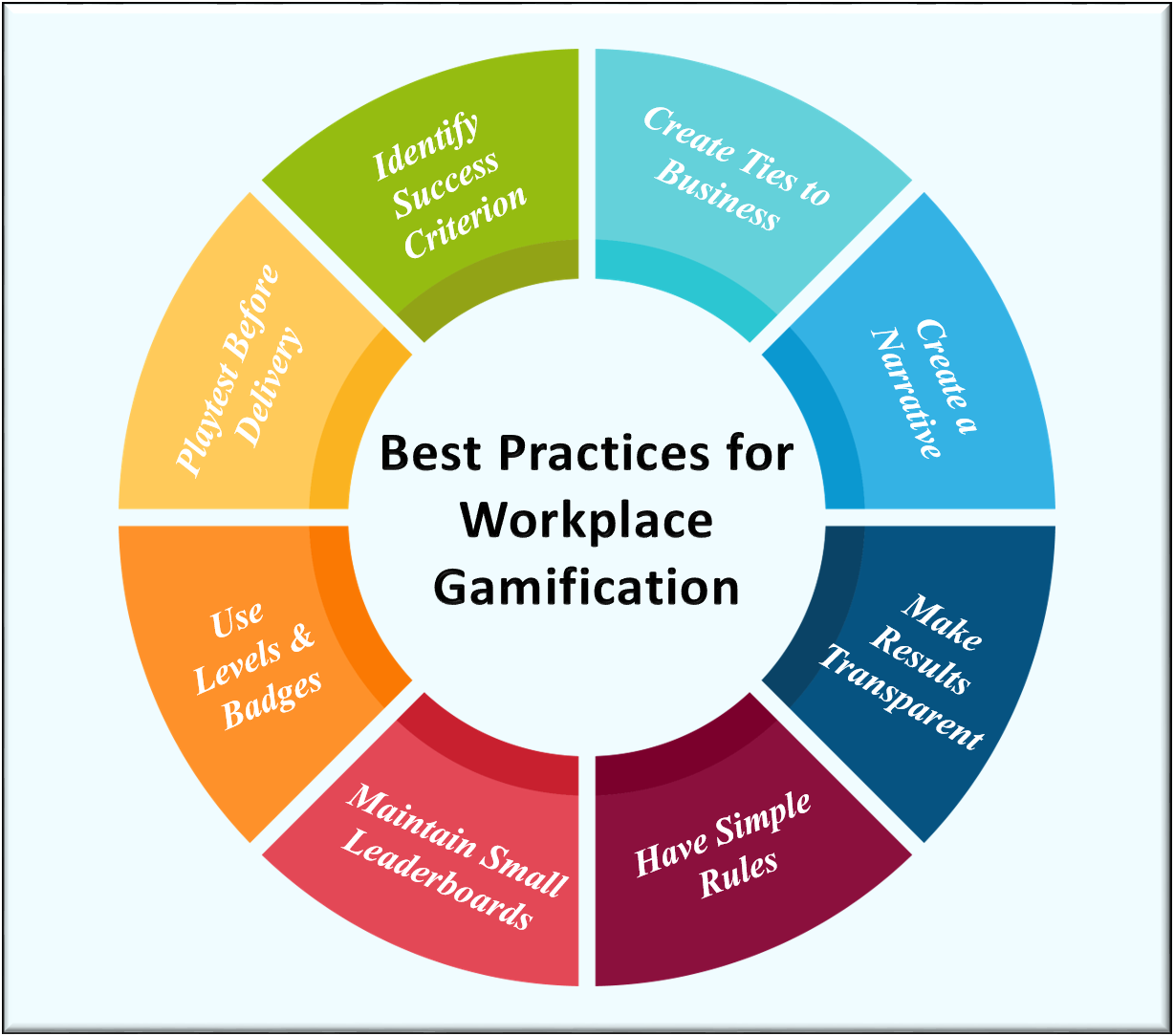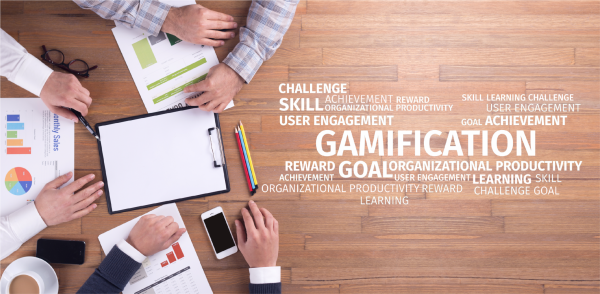Gamification in the workplace refers to the application of gaming techniques in work-related tasks. It has proven to be the best tool for engagement, be it for adults or kids. It has the capacity to grab the participant’s attention and hold it firmly until the objective is achieved. Given its effectiveness, it is already being adopted in education to yield better results, and now, its adoption in the workplace is on its way.
Read our previous blog on how Gamification in the Workplace (Part-I) has been observed to be boosting employee morale and increasing productivity. All organizations work to maximize productivity to generate larger revenue. So, employee training uses gamification to improve results and to promote team building. Moreover, it is also an essential part of HR that addresses a multitude of issues in the workplace.
Effective Use of Gamification
Gamification is an approach to learning that aims to engage employees by making work more enjoyable. It can be used effectively by keeping certain factors in mind while designing scenarios that involve employees. A gamified training must:
- have a consistent learning pattern
- motivate employees
- engage and accommodate all participants
- be relevant and relatable to real-life scenarios
- challenge employees to compete and to strive for success
- have a reward system for every accomplishment
- provide opportunities for practice and application of learning
- help in longer retention of information
Elements of Gamification in the Workplace

It should be noted that to ensure the effective use of gamification, certain elements must be put into play. Designing these elements requires keeping in mind the needs of the training and the objectives it aims to achieve. Moreover, these elements must also enhance the impact of the training.
1. The Narrative
Gamified training with a good narrative works best to engage employees and retain their interest.
2. Challenges Offered
Challenges are the stimulus that encourages an employee to strive for success. Thus, gamified training must include challenges that lead to the achievement of specified objectives.
3. Levels
Levels in a game induce excitement in players, which inherently involves them even deeper into the program and improves learning.
4. Scores
Scores offer an assessment of the performance of the players. Employees compete to achieve the highest score, which creates a healthy and competitive workplace environment.
5. Rewards, Badges, and Leaderboards
Rewards, badges, and leaderboards provide intrinsic motivation as they give recognition to the employees’ efforts, thereby providing job satisfaction.
6. Feedback
This is an essential element of gamification in the workplace. Feedback provides scope for improving one’s performance.
Implementing Gamification in the Workplace
The implementation of gamification in the workplace requires a well-structured approach. If not planned properly, it might not achieve the desired objectives of training. Therefore, it is necessary to follow a set of well-defined steps to create effective gamified training for employees in the workplace.
- Identify the goals to be achieved.
- Determine the behavioral and skill requirements.
- Design a user experience-oriented application.
- Make the objectives clear.
- Tailor the game elements based on the workflow.
Best Practices for Gamification in the Workplace

Gamification in the workplace is an effective training strategy that fulfils all training needs by adding enjoyable elements. Although gamification uses a well-planned strategy for implementation, it is equally important to keep certain points in mind while implementing gamification in a workplace.
i) Identify the success criterion
A gamified training needs a pre-determined success criterion to plan gamified training activities.
ii) Create ties to the business
Training that uses gamification must be tied to the business and must have a definite purpose. It should foremost be designed to meet business requirements.
iii) Create a narrative/story
A good narrative is vital to building engaging training. A gamified training needs an engaging narrative to evoke the interest of the employees.
iv) Make results transparent
Transparent results provide fuel to employees’ competitive spirit as they strive for success in a healthy environment.
v) Have simple rules
Having complicated rules in a game is disheartening. Gamified training must have simple rules that are easily understood by everyone and are not difficult to follow.
vi) Maintain small leader boards
Leader boards must be small as competing in small groups helps motivate employees to perform better.
vii) Use levels and badges appropriately
Using levels and badges motivates employees as their efforts are recognized. As a result, employees experience tremendous job satisfaction.
viii) Playtest before delivering
Playtest the gamified training before delivering it to the employees for final execution. This reduces any chances of error.
Final Thoughts
On the whole, gamification of a workplace is a highly effective strategy for engaging employees and inducing learning. It is a technology-based approach that is employed in a workplace to make it more fun, and it has several benefits for the employees as well as for the businesses.
Moreover, it helps ditch the monotonous routine of the workplace by introducing game elements along with learning. This boosts the overall job satisfaction and increases the employee productivity of a business.
Read more about effective teaching strategies on our blog.
Additional research: Medium
Featured image from Shutterstock and info-graphic template from Vecteezy.
Visit our blog for further reading on Gamification.
Create. Engage. Inspire.

















